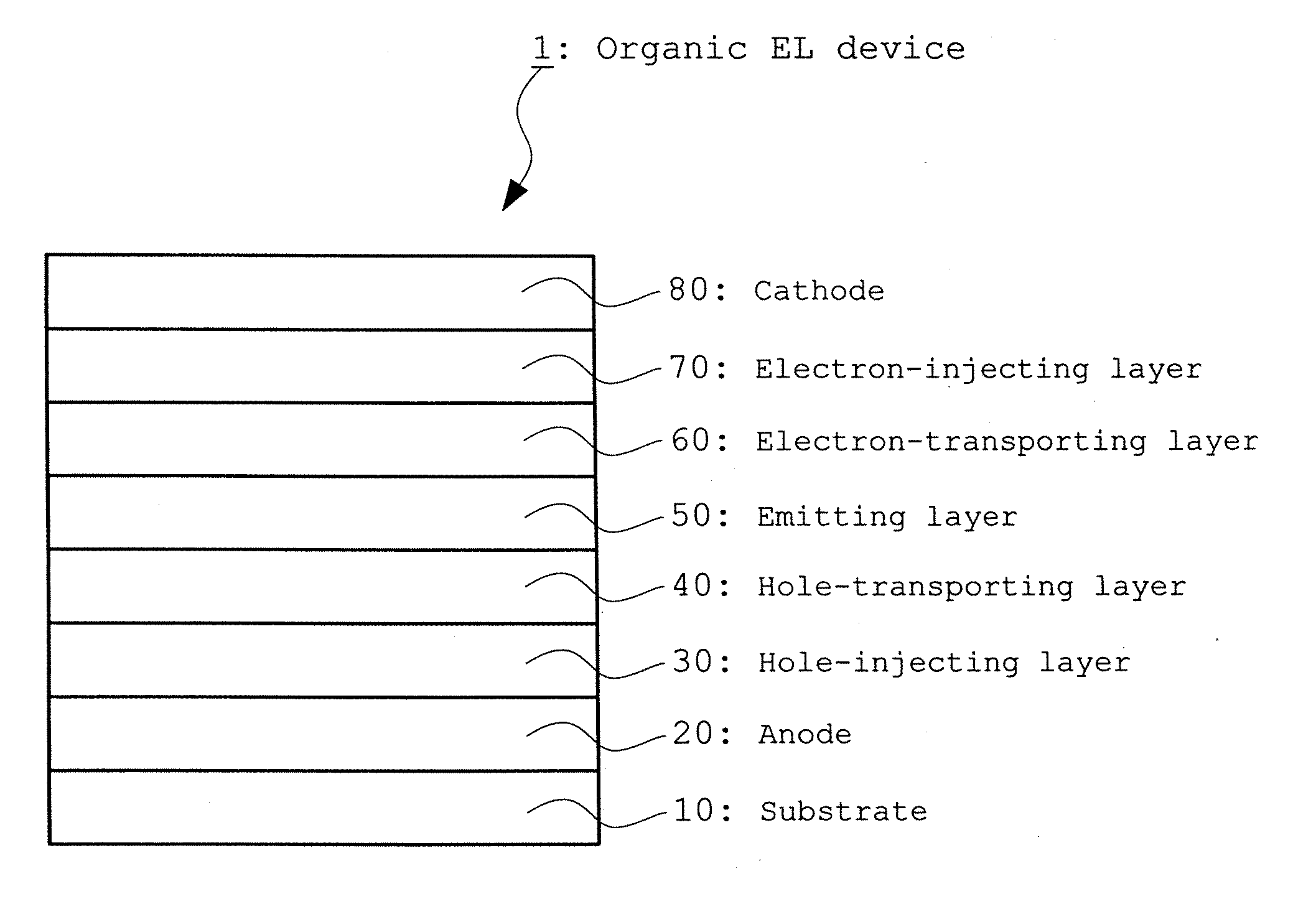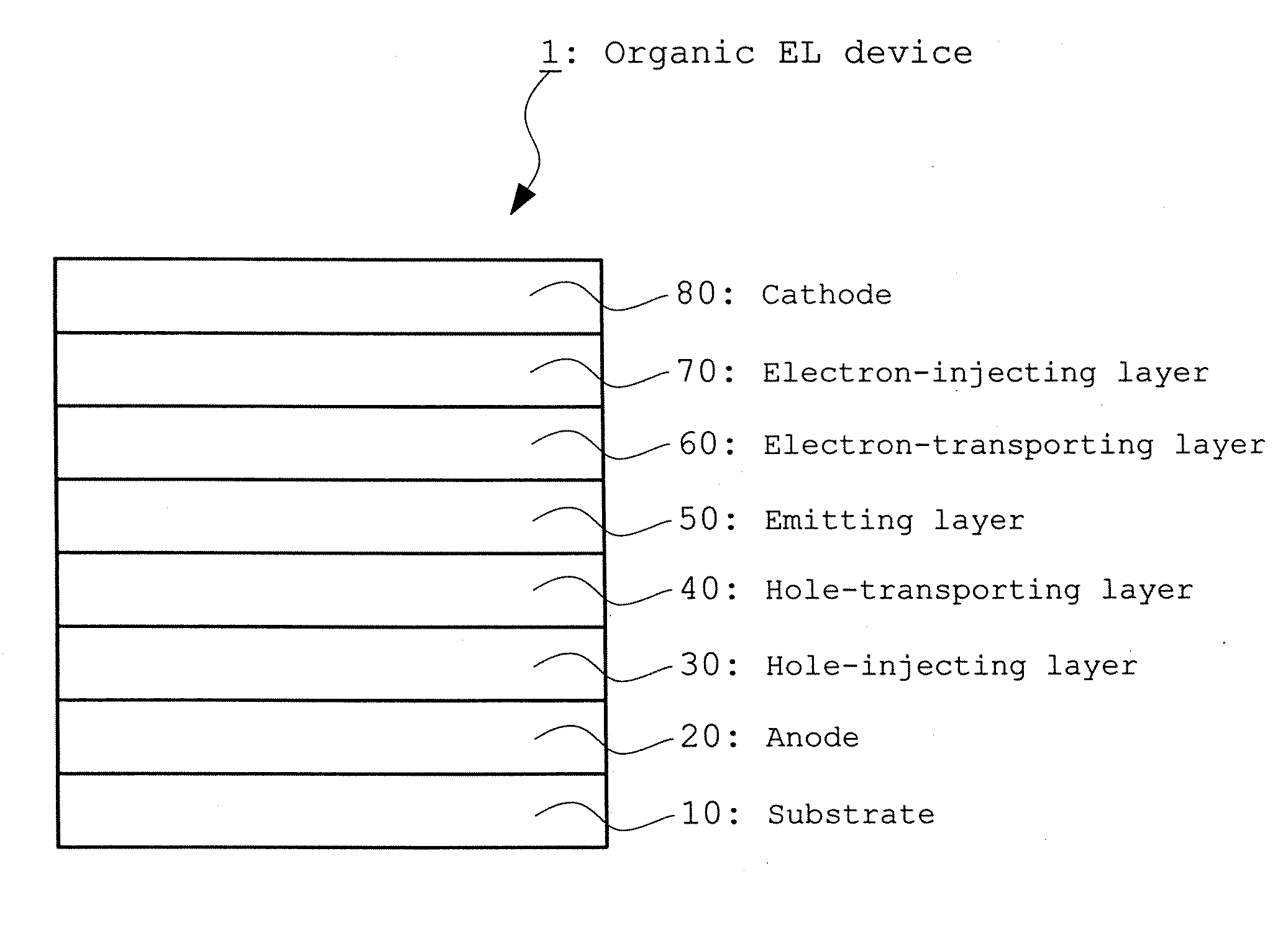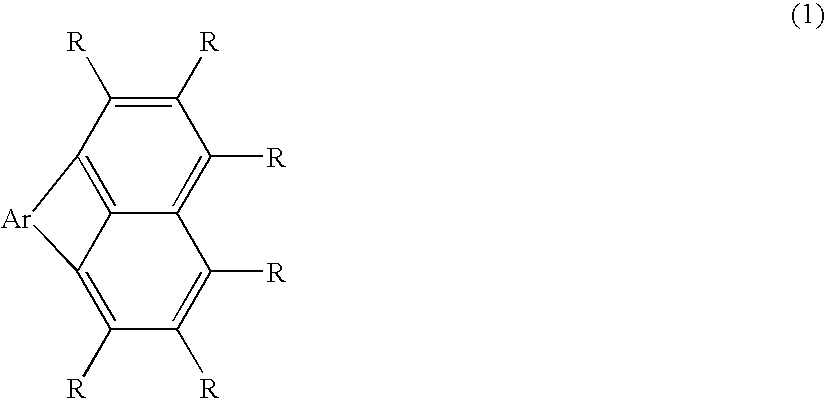Organic electroluminescent device using fluoranthene derivative and indenoperylene derivative
an electroluminescent device and fluoranthene technology, applied in the direction of luminescent compositions, discharge tubes/lamp details, discharge tubes luminescent screens, etc., can solve the problems of low luminous efficiency and lifetime, high applied voltage, and insufficient half-time luminance of about 150 hours, so as to enhance the life and efficiency of the organic el device
- Summary
- Abstract
- Description
- Claims
- Application Information
AI Technical Summary
Benefits of technology
Problems solved by technology
Method used
Image
Examples
example 1
[0179] A transparent electrode made of an indium tin oxide with a thickness of 120 nm was provided on a grass substrate measuring 25 mm by 75 mm by 0.7 mm. The grass substrate was subjected to ultrasonic cleaning with isopropyl alcohol for 5 minutes, and cleaned with ultraviolet ozone for 30 minutes. The resultant substrate was mounted in a vacuum deposition device.
[0180] N′,N″-bis[4-(diphenylamino)phenyl]-N′,N″-diphenylbiphenyl-4,4′-diamine was deposited to form a 60 nm thick film as an hole-injecting layer on the substrate. Thereafter N,N′-bis[4′-{N-(naphthyl-1-yl)-N-phenyl}aminobiphenyl-4-yl]-N-phenylamine was deposited to form a 10 nm thick film as a hole-transporting layer thereon. Next, the compound (A-1) of a naphthacene derivative shown below and the compound (B) of an indenoperylene derivative shown below were co-deposited such that the weight ratio of (A-1) to (B) was 40 to 0.4, to form a 40 nm thick film as an emitting layer.
[0181] Next, the compound (C) was deposited ...
example 2
[0184] An organic EL device was fabricated in the same manner as in Example 1 except that the compound (A-2) of a naphthacene derivative, was used instead of the compound (A-1) when an emitting layer was formed.
[0185] For the device thus obtained, a current test was performed. Red emission with a driving voltage of 4.0 V and luminance of 776 cd / m2 was obtained at a current density of 10 mA / cm2. The chromaticity coordinates were (0.67, 0.33) and the efficiency was 7.76 cd / A. When a direct current continuous test was performed at an initial luminance of 5,000 cd / m2, a half life was 3,400 hours.
PUM
 Login to View More
Login to View More Abstract
Description
Claims
Application Information
 Login to View More
Login to View More - R&D
- Intellectual Property
- Life Sciences
- Materials
- Tech Scout
- Unparalleled Data Quality
- Higher Quality Content
- 60% Fewer Hallucinations
Browse by: Latest US Patents, China's latest patents, Technical Efficacy Thesaurus, Application Domain, Technology Topic, Popular Technical Reports.
© 2025 PatSnap. All rights reserved.Legal|Privacy policy|Modern Slavery Act Transparency Statement|Sitemap|About US| Contact US: help@patsnap.com



